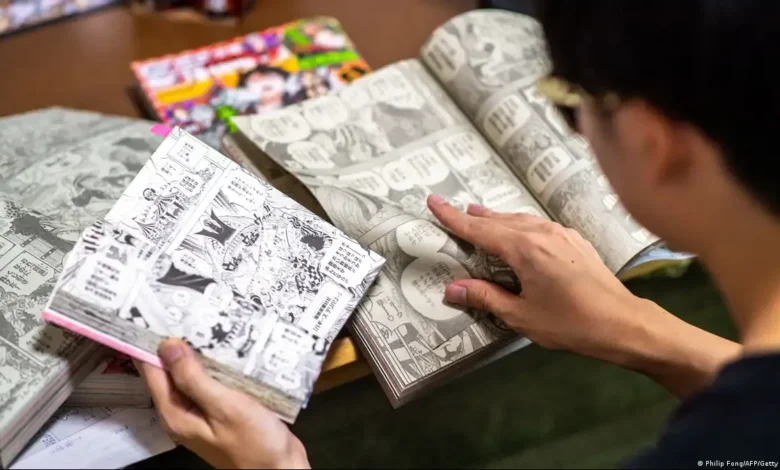The Brew of Creativity: Exploring the World of Coffee Manga

Introduction
Coffee and manga – two of Japan’s most beloved exports. While they may seem like an unlikely pair, the two have come together uniquely and fascinatingly in the form of coffee manga. In this article, we’ll delve into the world of coffee manga, exploring its history, notable titles, and the cultural significance of this niche genre.
A Brief History of Coffee Manga
Coffee manga, also known as “coffee comics” or “cafe manga,” has its roots in the 1960s and 1970s, when coffee culture first took off in Japan. During this time, manga artists began incorporating coffee and cafes into their stories to reflect the changing times and cultural landscape. These early coffee manga titles were often romantic comedies or dramas featuring coffee shops as central meeting places for characters.
One of the pioneers of coffee manga is the renowned artist Shoichi Haga. His 1969 manga, “Coffee no Jikan” (“Coffee Time”), is often credited as one of the first coffee manga titles. The series follows the lives of a group of young friends who frequent a Tokyo coffee shop, exploring themes of love, friendship, and social change.
In the 1980s, coffee manga experienced a resurgence in popularity with the rise of manga magazines like “Coffee Time” and “Café Manga.” These publications featured coffee-themed stories, from romantic dramas to sci-fi epics. This period also saw the emergence of new artists, such as Takashi Hashiguchi, who would become a leading figure in the coffee manga scene.
Notable Coffee Manga Titles

Over the years, coffee manga has evolved to encompass various genres and styles. Here are a few notable titles that showcase the diversity of this niche genre:
- “Barista” by Jouji Manabe: This 2005 manga follows the story of a young barista who becomes obsessed with perfecting his craft. With its detailed illustrations of coffee-making techniques and exploration of the world of competitive barista culture, “Barista” is a must-read for coffee enthusiasts.
- “Coffee & Vanilla” by Takashi Hashiguchi: This 2015 Yaoi manga (a genre of manga targeting a female audience and focusing on romantic relationships between men) tells the story of a young coffee shop owner who becomes involved with a charismatic coffee critic. With its steamy romance and coffee-fueled drama, “Coffee & Vanilla” is a popular title among fans of the genre.
- “Kiss & White Lily for My Dearest Girl” by Canno: This 2015 manga follows the story of two high school girls who become friends over their shared love of coffee. The coffee shop symbolizes comfort, support, and growth as they navigate their relationships and personal struggles.
The Cultural Significance of Coffee Manga
So, why has coffee manga become such a beloved and enduring genre in Japan? One reason is the country’s unique coffee culture. Japan is famous for its vibrant coffee scene, with tiny cafes and coffee shops dotting the streets of Tokyo and other major cities. Coffee is an integral part of Japanese daily life, and manga artists have tapped into this cultural phenomenon to create stories that resonate with readers.
Coffee manga also reflects Japan’s love of nostalgia and retro culture. Many titles are set in the 1960s and 1970s, when coffee culture first emerged in Japan. This nostalgia for a bygone era is a common theme in Japanese pop culture, and coffee manga is no exception.
Finally, coffee manga has become a way for manga artists to explore creativity, community, and comfort themes. Coffee shops are often depicted as cozy, welcoming spaces where characters can escape the stresses of everyday life and connect with others. This reflects the Japanese concept of “ikigai” – finding purpose and meaning in life through creative pursuits and social connections.
The Art of Coffee Manga
Coffee manga is not just a genre – it’s also an art form. Many coffee mang a titles feature beautiful, detailed illustrations of coffee cups, coffee beans, and coffee-making techniques. The attention to detail is stunning, with artists often spending hours researching and perfecting their depictions of coffee culture.
One of the most notable aspects of coffee mang a is its use of visual storytelling. Artists use techniques from bold lines and vibrant colors to delicate watercolors and subtle shading to bring their stories to life. The result is a unique and immersive reading experience that draws the reader into the world of coffee.
Coffee Manga and the Coffee Industry
Coffee mang a has had a significant impact on the coffee industry in Japan. Many coffee shops and cafes have been inspired by the genre, incorporating elements of coffee mang a into their branding and marketing. Some shops even offer special “coffee manga” menus featuring drinks and desserts inspired by popular titles.
In addition, coffee manga has helped to drive the growth of the specialty coffee market in Japan. With its focus on high-quality, artisanal coffee, Coffee Mang a has inspired a new generation of coffee enthusiasts to seek out unique and exotic coffee experiences.
The Global Reach of Coffee Manga
While coffee mang a originated in Japan, its popularity has spread globally, with titles being translated into multiple languages and inspiring a new wave of coffee-themed comics and graphic novels worldwide.
In the United States, coffee mang a has inspired a range of coffee-themed comics and graphic novels, from indie titles like “The Coffee Shop” to mainstream releases like “Starbucks Presents: The Coffee Collection.”
In Europe, coffee manga has influenced the growth of the coffee culture, with many coffee shops and cafes incorporating elements of the genre into their branding and marketing.
The Future of Coffee Manga
As coffee culture continues to evolve and grow, the future of coffee mang a looks bright. With its unique blend of art, storytelling, and coffee culture, coffee mang a is poised to remain a beloved and enduring genre in Japan and worldwide.
In conclusion, coffee manga is a fascinating and unique genre that reflects Japan’s love of coffee, nostalgia, and community. From its early days as a romantic comedy staple to its modern incarnations as a platform for exploring themes of creativity and comfort, coffee mang a has evolved into a rich and diverse genre that continues to inspire and delight readers worldwide.
Conclusion
Coffee manga is a unique and fascinating genre that has captured the hearts of millions worldwide. Its impact on Japanese pop culture, social media, and the coffee industry is undeniable. As the genre continues to evolve, it’s clear that coffee mang a is here to stay – and we can’t wait to see what the future holds!





